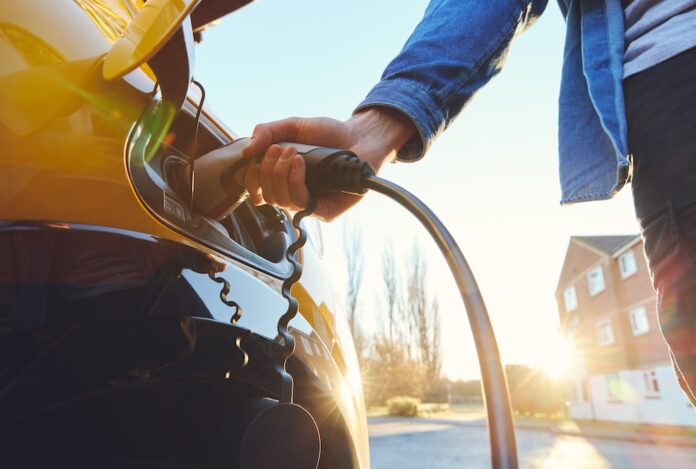Britain’s RAC Foundation said the country’s “patchy” mobile signal coverage is causing problems for EV drivers
Around two-thirds of the UK’s most common type of public chargepoints suffer limited mobile signal connectivity meaning they do not have an adequate level of coverage from all four mobile phone network providers – EE, O2, Three and Vodafone – to guarantee they can be activated 100% of the time.
The RAC Foundation found that outside of London, just a third (33.4%) of the so-called Type-2 chargers analysed are in locations where there is acceptable all-network 4G coverage. Two-thirds (66.4%) are in spots where a signal from one, two, three or even all the providers is absent or too weak to work. In London, the picture is only slightly better at 39.7% and 61.3% respectively.
According to Department for Transport figures (based on data from ZapMap) there were 53,677 public charging devices in the UK at the start of the year.
Of these, 31,910 have speeds up to 8kw and almost all will be so-called Type-2 chargers. Unlike chargepoints with a speed of 8kw or faster, chargers below 8kw are not obliged to provide for contactless payment. In fact, the vast majority require drivers to access them via mobile phone apps. What is more, most chargers themselves also need an adequate mobile signal connection to function.
Unless all four mobile operators are providing adequate signal coverage at the chargepoint location there’s a risk that either the user or the charger will lack the connection needed to unlock the flow of electricity, according to RAC Foundation.
Where a 4G signal is absent then a residual 3G signal might still be available, but the national 3G network is due to be shut down completely by 2033. Vodafone has already turned off its 3G network with EE and Three expected to complete their shutdowns later this year, and O2 next year.
Not hassle-free
“Drivers of vehicles fuelled by petrol and diesel are used to reliable and hassle-free filling up at any of the 8,400 forecourts across Britain. The same cannot yet be said of topping up the battery of an electric car at a public chargepoint,” said RAC Foundation director Steve Gooding. “In many instances the mobile phone has become the key to unlocking the potential of the electric car. Unfortunately, that key does not always work.
“The mobile phone is already deeply embedded in our daily lives, not least when it comes to driving where we rely on a good mobile connection to inform our satnavs, pay for parking and to unlock electric chargers,” he said. “But all these systems need to be designed with an eye sharply focused on real-world network coverage, which is often patchy, sometimes non-existent, and not about to become infinitely better.
This study comes as the Society of Motor Manufacturers and Traders (SMMT) reports that the market share of new pure battery electric cars was 15.2% in March compared with 16.2% in the same month last year. The sheer cost of EVs and of EV repairs is already causing palpitations in the motor industry so the mobile issue is only adding fuel to the fire, (or amps).
“Where signal connectivity at a chargepoint is a problem drivers might conclude that the charger is at fault hence undermining the confidence we should be building in the reliability of public charging options for electric vehicles, said Gooding. “What’s more, the poor connectivity won’t get picked up in the new mandatory reporting system applying only to the rapid charger network.”
He added: “In order to design reliable connected services that work for motorists we need a better approach to assessing and reporting the adequacy of on-the-move connectivity so that designers, including electric chargepoint providers, can select which of the readily available workarounds would cover for the shortcomings of the mobile networks.”
Alternatives to patchy mobile
Gooding believes some workarounds could include: signposting the availability of a limited wi-fi hotspot for drivers to use (e.g. in the on-charger instructions for use) if the chargepoint’s connection is robust but the motorist’s might not be; the use of roaming SIM cards (i.e., from other countries); ‘roaming’ RFID cards more widely, and freely, available to remove the motorist’s phone from the equation; or improving the Single Rural Network programme of mast sharing between mobile network operators.
The RAC Foundation analysed a randomly selected sample of 2,059 Type-2 public chargers across Britain. The mobile signal strength data used in the analysis was provided by Teragence.


